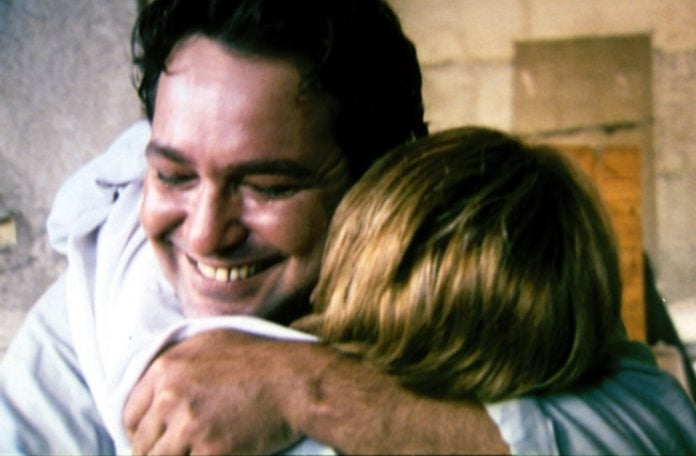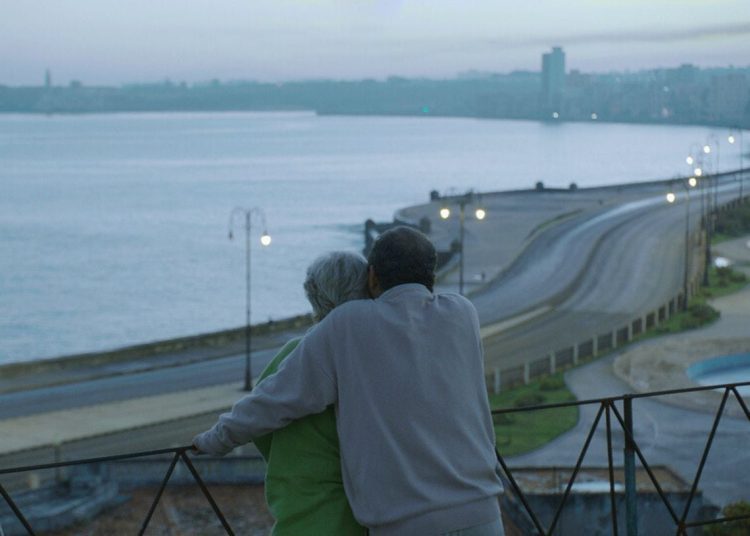When my grandmother left Cuba, I wrote her a letter. She responded by appreciating that, being so young, I could understand the reasons for her departure, accompanying my closest aunt and her small children. Years later, like someone returning a ring or a talisman, my aunt gave me that letter, written when I was 19 years old. I keep the two letters as points of a dialogue that was never interrupted within me.
A few days ago I tried to explain the dialogue with emigrants as an encounter with many shores. I referred to the policy initiated in 1978, its strategic meaning, its intra-history and its social context, dimensions that are not always aligned. But it is clear that this dialogue is much more than that.
Reasoning about the vicissitudes of our public debate in theater and cinema, I commented that the relationship with those who left has been among their main themes for a long time. I mentioned Weekend in Bahía (1987), by Alberto Pedro, where two characters who were in love meet again, and explain why she decided to leave and he to stay. Their dialogue in bed does not exactly resort to discourses about freedom or socialism, as is natural. The same author later vindicated Celia Cruz and the music that unites us, in Delirio habanero (1994). La familia de Benjamín García (1990), by Gerardo Fernández, had taken the bull by the horns, getting into the most sensitive part of the division, the family schism.
The reader will notice that I put a date on all these works, because mixing the 1990s or the present with the Gray Five-Year Period (1971-76), in addition to ignorance or bad faith, gives rise to confusion. Indeed, if in such public media as theater and cinema, it has been possible to conquer that space, not to mention what the narrators have been able to say, without allowing themselves to be muzzled or having to ask permission. The underlying lesson, the same as in the social sciences and other fields of culture, is that what is worth, costs. Good justifications can always be used to go overboard or keep quiet.
Cuban cinema did not stop portraying this relationship, from the separations of the 1960s to the returns of the 1980s. In Lejanía (1985), by Jesús Díaz, the mother who returns loaded with cheap presents, and the son she left behind, don’t understand each other; but the Cuban-American cousin does have things to talk about with him, even though they are both very different, whether they are dreams to share or diverse desires that manifest themselves when they start talking on a rooftop, away from the street noises and family grudges.
On another rooftop, thirty years later, where Regreso a Ítaca (2015) takes place, with a script by Leonardo Padura, Cuban actors and staging, the one who left did so out of “fear of becoming an informer and betraying his friends.” Those who stayed, for their part, are nothing more than frustrated, opportunists or “believers” in the Revolution. The one who returns from self-exile and repatriates is because he decided, after sixteen years abroad, “to do whatever he wants, and stop being afraid.”
Among them, there is no — nor can there be — encounter with their presents or a resumption of lives, which have been emptied, but only a repertoire of memories and nostalgia of a past that is worth good times and youthful great times. Talking, yes. Dialogue, no.
Naturally, to build reencounters, “recouplings,” and dialogue, it is necessary to understand the political rupture and confrontation that precedes and contextualizes them. The field of art and literature also includes them in all their intensity.
Sergio, the protagonist of Memories of Underdevelopment (1968), says goodbye to his bourgeois relatives who are going into exile (serious exile, not emigration), with relief. He does not suffer when staying, he chooses it deliberately. Although he never manages to understand what is happening here (“underdevelopment”) because, as the film clearly emphasizes, he looks at it with a marginal, alien eye, his circle of family affections and friends are not, for him, the real Cuba. At least that’s clear.
That same critical year of 1968, Los siete contra Tebas, by Antón Arrufat, delved head-on into the family rifts that accompany the political conflict, perhaps like no other work of art to date.
Two brothers face each other on the battlefield, and end up killing each other. Even in the tragic extreme of fratricidal struggle, none of them bears guilt or innocence. As Norge Espinosa has pointed out, both use compelling reasons that support their behaviors, make them understandable, and give them meaning. But it is clear that “the city” that one defends and the other attacks is above all else, not a mere sentimental or family reflection of them. If the defeat of the one who besieges it does not turn him into an outcast, a wretch, it is because of the greatness of those who defend the city: “We will have for him the mercy that he did not know how to have for Thebes.”
More recent films, such as Miel para Oshún (2001), Esther en ninguna parte (Gerardo Chijona, 2013), Últimos días en La Habana (Fernando Pérez, 2016), do not deal with the relationship between those who are here and there as a fatality, disagreement, irreparable traumas; but as the space in which losses and forgetfulness are resolved, but appearances and stereotypes are also dissolved, and unexpected futures emerge.

Diez millones (2016), by Carlos Celdrán, also addresses intra-family tensions, and their impact on the sentimental education of children, evoking the trauma of Mariel and its scars, not always closed. Painful memories that, however, do not merge into resentments or stereotypes, quite the opposite. As a classic would say, there lies the detail.
Before I have pointed out how actors in the field of culture and academia, musicians, plastic artists, writers, theater artists, teachers, who live outside and inside, communicate with each other, create common projects, and participate together in festivals, exhibitions, publications, they come and go, exercising relationships that are neither polarized nor irreconcilable.
Now, imagining artists as angels above predominant political cultures and their markets, idealizing their works as mirrors of Cuban society inside and outside forgets that their version is often dressed as the genuine one, “the real one,” just because it contrasts with “the official story.”
Indeed, the omitted and binary vision of the process is not only the one reproduced by the media and discourses. Often works of art demonize politics en bloc, or denounce the politicization of everyday life, while making it appear in every corner of a plot, the smallest conversations in a novel, a play, a film, using easy resources to portray our propensity for gossip or sentimentality.
I was reminded once again by the political debate in which En ningún lugar del mundo (2018), by Abel González Melo, ends. I saw the film last weekend, recommended by a visiting émigré friend. Apparently, the fuel of this debate is the traumatized memory of the one who returns, his bitter experience of Angola and Mariel. But deep down lies the family resentment that is still alive. Although both characters appear to have overcome that resentment and have forgiven themselves for the good of the family, it is a lie.
Knowing that Cuban theater, before and after 1959, is full of those uncompromising family conflicts, there would be nothing to point to that fight, well written and staged, without sparing tragic fury and terrible blindness.
It is at the climatic point of the work, the political debate here and now, where both contenders reveal their very different human condition. The one who returns speaks from his heartbreaking experiences, his justified hatred of a family that took him out of the island to get rid of him, and whose evil has no name; and which he, despite everything, continues to support with remittances from a distance. His adversary lacks his own reasons, those that give meaning to being here and continuing to do so at this screwed-up moment, but instead responds with slogans taken from the rhetoric of speeches.
The émigré looks back from his happy life in the land of freedom, where ruined Cuba is no longer his homeland, but just a nostalgic landscape that he shares with his daughter. The one who is here is submissive to the regime, to a mother who is a leader and has double standards, and whose wife and daughter have submitted to him, in a chain of subordinations that is a mirror of the system.
Given that art does not exist to make balanced portraits of society and its conflicts, much less to solve them, I was grateful to see this work in the current context, in a full room, with magnificent actors, in today’s Cuba, which allows me to illustrate these brief reflections on dialogue and its opportunities.
If it is about contributing to understanding between the two shores, it would not be a bad idea for those who have chosen to reside abroad (most of the time) not to assume that those who remain here (most of the time) have “self-castrated” themselves, live under iron “control and fear,” without their own convictions or political ideas, but rather empty slogans, or out of pure opportunism and simulation. Along that line, it is difficult to build almost anything, much less dialogue.
Discussing the multiple sides of censorship, I have defended the cultural and political reason for putting all those plays and films, publishing all those novels, in Cuba. As well as ensuring that works and authors ignored outside, for political or commercial reasons, or both, are disseminated with the same equity. Not just in Miami, but everywhere. The lack of a reasoned critical debate, with arguments instead of catharsis, with analysis instead of catastrophisms and nightmares, does not contribute to fostering a culture of dialogue that we do not have. Neither here nor outside of here.
When the countrypeople from Escambray saw the first plays, in that remote time of the transition between the 1960s and 1970s, they called them “apparentnesses.” However, they were involved in the debates about those apparent stories as in their own lives; and the moment came when they argued with the actors as if these were really the characters they represented. The line between what was real and what was imagined was too fine.
I wonder if, in our time of social media and multiple truths, of beliefs and obstinacy, this opportunity to share different readings about everyone’s life lends itself as a basis for a real and lucid dialogue, non-conformist, without resentment or submission.
Maybe yes.










